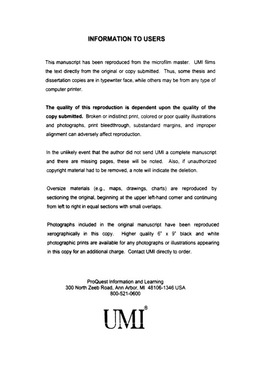| dc.contributor.advisor | Beasley, William, | en_US |
| dc.contributor.advisor | Postawko, Susan, | en_US |
| dc.contributor.author | Noble, Cynthia Marie Machacek. | en_US |
| dc.date.accessioned | 2013-08-16T12:18:25Z | |
| dc.date.available | 2013-08-16T12:18:25Z | |
| dc.date.issued | 2001 | en_US |
| dc.identifier.uri | https://hdl.handle.net/11244/384 | |
| dc.description.abstract | Lightning and storm electrification have been studied from many different viewpoints and with many different instruments. The myriad of viewpoints and instruments often see the results or effects of different processes within the lightning flash. The challenge becomes to understand how the data from the different instruments and different points of view relate to each other. Optical detection instruments aboard satellites have been used to study lightning on earth and on other planets, most notably Jupiter. Terrestrial satellite data has been promoted as an in indicator of moist convective processes in the atmosphere, which can be used as proxies for convection in such applications as model initialization, convective parameterization, and global climate studies. Jovian lightning data has been used to indicate dynamic processes in Jovian thunderstorms and to infer where and when, and therefore why, such storms occur in the Jovian atmosphere. This study seeks to address how optical satellite lightning data relate to the physical characteristics of the lightning flash which produced the optical signals, and therefore gain some insight on how to better interpret the limited amount of optical lightning data from Jupiter. | en_US |
| dc.description.abstract | To accomplish this aim, data from the National Lightning Detection Network (NIDN) and the New Mexico Tech Lightning Mapping Array (LMA) are used to provide ground-truth for optical lightning data from the Fast on-Orbit Recording of Transient Events (FORTE) Photodiode Detector (PDD). Several conclusions are made based on the analyses presented here. First, PDD events with peak estimated optical power greater than or equal to 1011 W ("bright" events) are much more likely to be cloud-to-ground (CG) events than PDD events with smaller peak optical power. Furthermore, CG events associated with a "bright" PDD event are mow likely to be positive than for PDD events with smaller peak optical power, and than for climatology. Second, in general, the likelihood that a PDD event will be associated with a CG flash decreases with decreasing peak optical power. Third, if a flash is detected by the PDD, it tends to reach higher above the ground, have a greater horizontal extent, and a longer duration than flashes that are not detected by the PDD. Fourth, it is likely that the lightning processes which are mapped by the LMA may not directly correlate to the lightning processes which produce the optical signals to which the PDD is the most sensitive. However, the PDD and the NLDN often seem to see aspects of the same return stroke, with the NLDN recording the connection to ground and the PDD recording optical signals that are produced once the return stroke process propagates up into the cloud. Finally, what this study shows is that the actual relationship between optical signals recorded from a satellite-based instrument and the physical lightning channels themselves may not be so simply described as simple scattering through a cloud from a point or line source. In order to better interpret the Jovian lightning data, perhaps more complex scenarios, based on the situations that are seen for terrestrial lightning, need to be considered. | en_US |
| dc.format.extent | vii, 126 leaves : | en_US |
| dc.subject | Jupiter (Planet) Atmosphere. | en_US |
| dc.subject | Lightning. | en_US |
| dc.subject | Geophysics. | en_US |
| dc.subject | Physics, Atmospheric Science. | en_US |
| dc.title | Optical observations of lightning by the FORTE satellite: Terrestrial ground truth and implications for the interpretation of Jovian lightning data. | en_US |
| dc.type | Thesis | en_US |
| dc.thesis.degree | Ph.D. | en_US |
| dc.thesis.degreeDiscipline | School of Meteorology | en_US |
| dc.note | Source: Dissertation Abstracts International, Volume: 62-10, Section: B, page: 4592. | en_US |
| dc.note | Advisers: Susan Postawko; William Beasley. | en_US |
| ou.identifier | (UMI)AAI3028812 | en_US |
| ou.group | College of Atmospheric & Geographic Sciences::School of Meteorology | |
